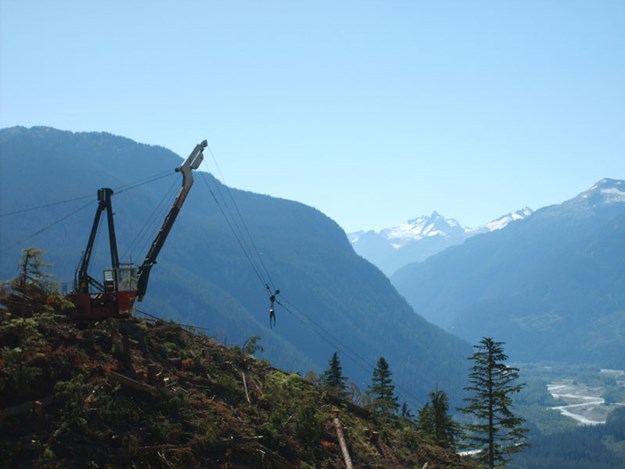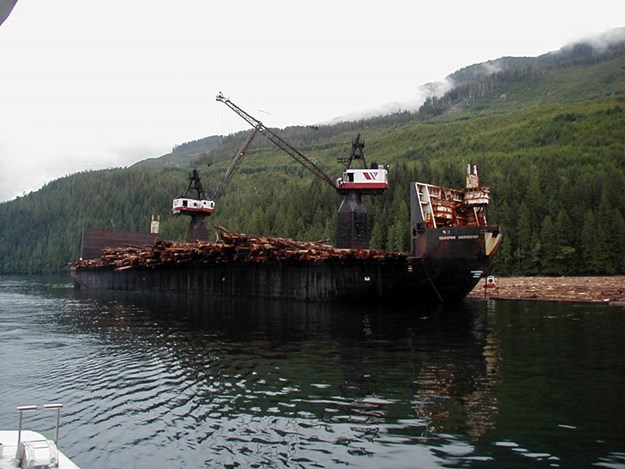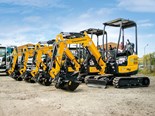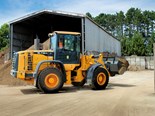The life of a Canadian lumberjack
Deals on Wheels writer Patrick Cox catches up with Canadian logger Murray Killin, to have a chat about his career in the industry
Canada is the second biggest producer of wood products to the world, with 42% of its total land area covered in trees - mainly spruce, poplar and pine. Canada contains 10% of the world’s forested land and has a massive land mass of nearly 10 million square kilometres with the world’s longest coastline at 243,000 kilometres.
 |
|
Murray Killin (bottom left) with two work colleagues
|
With 37.5 million people, it is certainly not over populated. Europeans are thought to have started logging in Canada as far back as the 11th century, but it was not until the early 18th century that logging and deforestation started to kick in. Forestry in Canada today employs approximately 210,000 people.
In February last year I met Murray Killin from Vancouver Island in British Columbia. Murray came to New Zealand to help set up a new Madill 124 for a Hawke’s Bay-based logging company. Here was a North American Logger at 59 years old with a huge wealth of experience on hauler-based logging machines.
Murray dropped out of school at 17 and got into a forestry company’s training programme for a choker man (breaker out). The course was only two weeks long - one week in the classroom and one week in the field. These courses taught you the basic hand and whistle signal, and also to explain the dangers of standing in the bite of the rope.
Sounds like basic stuff, but it is designed to keep you alive. Back in 1977, having any in-class training would have been well advanced compared to what was available in New Zealand. In Canada, loggers end up living in camps, as logging operations are four to five hours away, and that’s how Murray found himself in a camp of 400 men.
There were 13 haulers working from this camp - loading was done by line cable loader, no hydraulics. One month later Murray quit and found another job as a hook tender for a grapple hauler. He was the mule for a 55-year-old seasoned choker man who taught Murray tricks of the trade that have stayed with him to this day.
This was when he had his first near miss, when changing blocks 25 meters up a spar he nearly killed himself when releasing guy ropes, and just through sheer strength and the desire to stay alive he managed to free himself from a tangled guy rope that would have plunged him 25 metres to his death.
Sometimes near-death experiences can change the direction of the work-life path you are travelling, and Murray made the decision to learn to drive haulers rather than run up and down mountains like a mule every day. At 19, Murray had his bum firmly in the seat of a 120-tonne Madill swing yarder.
He was asked if he could walk this monster down the mountain. You might ask what was the problem - well back then these monsters were all mechanical, no hydraulics, built with mountain brakes, mechanical undercarriage with drive shaft and band brakes - this hauler would free run if you let it.
As a green horn full of confidence, moving the 044 down the mountain to the new landing went without a hitch. Since that day Murray reckons if he has not operated 100 haulers, it is certainly 50+ to this day.
 |
|
Murray reckons if he hasn’t operated 100 haulers, it is certainly 50+ to this day
|
It was at 19 that the girlfriend fell pregnant, not surprising as he only got home on weekends and he now has a grown-up daughter and son. The daughter works in the hotel industry and the son is an electrician. Interesting that Murray is the only member of his family that went into logging, with neither of his children interested.
The Killin family had spent 10 years living in logging camps. A big percentage of logging in Canada is still worked from logging camps, staying in the bush for weeks at a time. In the 18th and 19th century lumberjacks would stay in camps for the whole season, alcohol free, rough in those days, unwashed, conditions harsh, the unwritten rule of no talking while eating (they had approximately 15 to 20 minutes to get nutritious food into themselves, as they would burn about 7000 calories a day).
When they finally got to town the lumberjacks of old had a fearsome reputation of boozing hard, fighting, and being trouble makers. As in New Zealand, times have changed and loggers have lifted their image to one of respect. They are still camping out in Canada today and they float fully equipped facilities up and down rivers into lakes to be tied up where the work is.
Murray eventually formed the business Killin Timber, and had five haulers under his control pulling on average ten to fifteen thousand tonnes per month. He did not own the equipment, but operated under an hourly or tonne rate. He supplied the workforce, chainsaws, and transport vehicles.
His contracts have been to pull wood only; others did the processing and loading. With the five haulers they were working full-on 30 days a month - being seasonal you pulled wood when you could.
Murray’s experience is invaluable; he has passed on some tips to the contractor with the new Madill 124. Seeing him operate with ease and smoothness and showing the New Zealand operators the benefit of his 42 years’ experience has seen production lift and targets met.
Murray’s biggest production day in Canada was in excess of 1200 tonnes. No matter what conditions they have experienced over the years, production normally sits at an average of 300 tonnes. With just a short time with Murray I guess I have only just touched on what this lumberjack has done in his career.
Murray is now coming to the end of a long and successful career logging the green belt - if you had time you could write a book on him. With 65 deaths in one year five years ago in Canada, the logging industry needs the Murray Killins to pass on their experience to keep our loggers safe.
 |
|
Logs are shipped in bulk from remote logging sites
|
Find more heavy machinery for sale in NZ
Keep up to date in the industry by signing up to Deals on Wheels' free newsletter or liking us on Facebook.

















